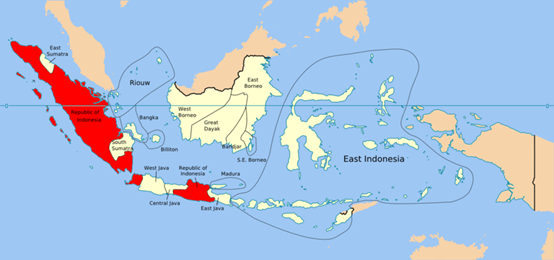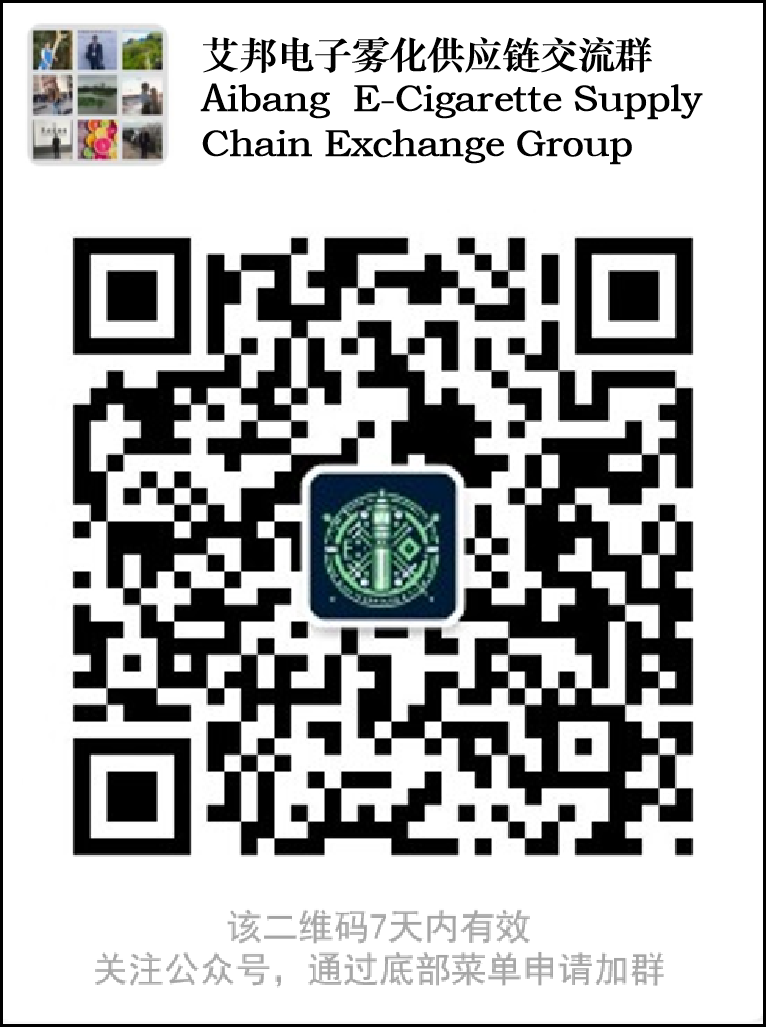印尼烟草市场分析
印度尼西亚是东盟第一大国,人口、面积和经济总量均占其40%左右,印度尼西亚陆地面积190万平方公里,海洋面积317万平方公里。印尼人口约2.7亿,居全球第4位;印度尼西亚经济增速多年来一直保持在5%左右,在全球主要经济体中位列前茅。根据印尼中央统计局(BPS)的数据,2022年第一季度GDP同比增长5.01%。作为东盟最大经济体和20国集团重要成员(GDP国民生产总值全球第16位),印度尼西亚在地区和国际事务中发挥着越来越大的作用。印尼总统佐科在2019年连任总统就职仪式上宣布,印尼致力于在建国100周年(即2045年)实现成为发达国家愿景,届时预计印尼GDP将达到7.3万亿美元,人均GDP达到25000美元,跻身世界前5大经济体行列。

印度尼西亚是全球重要的卷烟市场(全球第三大,仅次于中国,美国之后)和主要烟草生产国之一,该国经济对烟草产业的依赖度很高。自19世纪以来,烟草种植和消费深深扎根这个国家。印尼的烟草市场与众不同,基本上是由丁香烟占据主导地位,丁香烟年销售额占印尼所有卷烟年销售额的约95%。尽管近年来当地烟草消费在减少,但是2019年印尼人仍然吸食了高达3002亿支卷烟。该国的丁香烟大约75%为机制卷烟,其余的基本为手工卷制。
印尼是全球吸烟率最高的国家之一,吸烟现象在印尼非常普遍。根据2018年所做的一项调查,该国卷烟消费者数量将近1亿。吸烟是当地许多男人的生活习惯,该国62.9%的男性吸烟,而女性吸烟者数量占全国女性的4.8%。印尼对于购买卷烟的消费者年齡没有最低限制,按支销售卷烟的情况十分常见。该国卫生部的数据表明,2018年,年龄不到15岁的青少年中有33.8%的人吸烟,而2016年只有32.8%。
根据"东南亚控烟联盟"的数据资料,2020年5家烟草公司控制了印尼卷烟市场几乎90%的份额。三宝麟(Sampoerna)公司以32.5%的市场份额处于市场领先地位,紧随其后的是印尼盐仓
(Gudang Garam)集团占据27.5%的市场份额,嘉润(Djarum)公司占据18.7%的市场份额,奔都尔 (Bentoel)公司占据8%的市场份额,印度尼西亚烟草公司占据3%的市场份额,剩余10.3%的市场份额则由约500家中小规模的烟草制造商所瓜分。
根据印度尼西亚发展基金会的信息资料,烟草行业是印尼一个重要的行业,为598万印尼人提供了就业岗位,其中428万人在卷烟制造企业和销售企业工作,170万人从事烟草种植业。2019年,在烟草制造企业就业的人数占该国总体就业人数的0.34%。就像很多烟草种植国家一样,烟草主要由烟农来种植,这些人依靠烟草来谋生。此外,当地烟草种植业还需要努力解决童工问题。
2014年以来,该国要求卷烟制造商必须在烟盒正反面印刷健康警告,警告覆盖面占据烟盒面积的40%。同时,他们在一些场所实施了吸烟禁令,包括公共交通场所、医疗保健场所和教育机构等。印尼对于在电视和无线电广插上插放烟草广告也有一些限制。
尽管多次提高卷烟税费,但是印尼国内的卷烟价格仍然是亚太地区最低的,烟草税费远远低于世界卫生组织提出的标准。印尼的烟草税收制度十分复杂。目前,根据烟草产品类型、数量和价格,印尼将卷烟税率分为10个层级。设置这么多的层级是为了保护较小规模的烟草制造商和本国的工作岗位免于竟争。
2022年1月1日,印尼把所有卷烟类型的税费平均提高了12%,税费层的数量从10个减少到8个。据印尼财政部介绍,税费改革旨在满足不断增长的医疗保健费用,由于吸烟率不断上涨引发了该笔费用的增加,同时,是为了进一步降低青少年吸烟率。
在印尼,电子烟要比加热卷烟更为流行一些。因为电子烟比加热卷烟在印尼上市更早,电子烟是2010年在印尼上市的,而加热卷烟是在2019年才推向印尼市场。根据印尼发展基金会的研究,2020年该国约有220万名电子烟消费者。
印尼政府把非卷烟烟草产品划分为其他烟草加工产品。这些产品包括鼻烟、嚼烟、电子烟和加热卷烟等。所有其他烟草加工产品都按照57%的税率进行征税。
印尼发展基金会认为,印尼政府对新型烟草制品征收的税费应当低于可燃烟草产品的税费,应提高印尼消费者对新型烟草制品的购买力和购买便利性。
除了关于进口和消费税的规定外,针对新型烟草制品,印尼目前还没有出台具体而全面的监管规定,不同监管机构对于新型烟草制品的态度各不相同,有关政策尚未完全协调统一。印尼食品和药品监管机构想要禁止电子烟,但印尼卫生部希望像管控传统烟草产品那样对电子烟进行监管。
在中低收入国家,购买力对于新型烟草制品的发展是一个挑战。印尼发展基金会的哈里斯·西亚古安认为,新型烟草制品会在印尼市场取得成功。他说:"印尼人口总量超过2亿人,其中受过教育的中产阶层大约有5200万人。过去20年,许多贫困人口实现了重大转变,跨入了受过教育的中产阶级行列。这对于新型烟草制品发展来说是一个很好的机会。印尼中产阶级一直是该国经济发展的重要驱动力,自2002年以来,这部分群体的消费水平每年都在增长。一个合适的品牌大使、产品便利性以及购买能力对于新型烟草制品销軎成功起着非常重要的作用。"
来源:SENSASI KEUNIKAN RASA
PT INDONESIA RASA TEKNOLOGI
Winston WU +86 13602659944(WeChat) Reelly.cn@gmail.com
Indonesian Tobacco Market Analysis
Indonesia is the largest country in ASEAN, accounting for about 40% of the population, area, and economic output. Its land area covers 1.9 million square kilometers, and its maritime area spans 3.17 million square kilometers. With a population of approximately 270 million, Indonesia ranks fourth globally. The Indonesian economy has consistently maintained a growth rate of around 5% for many years, ranking at the forefront among the world's major economies. According to data from the Indonesian Central Statistics Agency (BPS), the GDP grew by 5.01% in the first quarter of 2022 compared to the same period last year. As ASEAN's largest economy and an important member of the G20 (ranked 16th in terms of GDP globally), Indonesia plays an increasingly significant role in regional and international affairs. Indonesian President Joko Widodo, during his inauguration ceremony in 2019, announced the country's commitment to becoming a developed nation by its centennial in 2045. By then, Indonesia's GDP is expected to reach $7.3 trillion, with a per capita GDP of $25,000, positioning it among the top five economies in the world.
Indonesia is one of the world's most important cigarette markets (the third-largest globally, following China and the United States) and a major tobacco-producing country, with a high economic dependency on the tobacco industry. Since the 19th century, tobacco cultivation and consumption have been deeply rooted in the nation. Indonesia's tobacco market is unique, dominated primarily by clove cigarettes, which account for about 95% of the annual sales of all cigarettes in the country. Despite a recent decrease in local tobacco consumption, Indonesians still consumed up to 302 billion cigarettes in 2019. Approximately 75% of the country's clove cigarettes are machine-made, with the remainder being hand-rolled.
Indonesia is among the countries with the highest smoking rates globally, with smoking being a widespread phenomenon. According to a 2018 survey, there were nearly 100 million cigarette consumers in the country. Smoking is a common lifestyle habit among many Indonesian men, with 62.9% of the male population being smokers, while female smokers account for 4.8% of the national female population. Indonesia does not impose a minimum age restriction for cigarette consumers, and selling cigarettes individually is quite common. Data from the Ministry of Health indicates that in 2018, 33.8% of adolescents under 15 years of age were smokers, up from 32.8% in 2016.
Data from the Southeast Asia Tobacco Control Alliance shows that in 2020, five tobacco companies controlled nearly 90% of the Indonesian cigarette market. Sampoerna led the market with a 32.5% share, followed by Gudang Garam Group with 27.5%, Djarum with 18.7%, Bentoel with 8%, and Indonesian Tobacco with 3%. The remaining 10.3% of the market share was divided among approximately 500 small and medium-sized tobacco manufacturers.
According to information from the Indonesian Development Foundation, the tobacco industry is a significant sector in Indonesia, providing employment for 5.98 million Indonesians, of which 4.28 million work in cigarette manufacturing and sales enterprises, and 1.7 million are engaged in tobacco cultivation. In 2019, those employed in the tobacco manufacturing industry accounted for 0.34% of the country's total employment. Like many tobacco-growing countries, tobacco is primarily cultivated by farmers who rely on it for their livelihood. Additionally, the local tobacco cultivation industry needs to address the issue of child labor.
Since 2014, the country has required cigarette manufacturers to print health warnings on both the front and back of cigarette packs, covering 40% of the pack's surface area. At the same time, smoking bans have been implemented in certain places, including public transportation, healthcare facilities, and educational institutions. Indonesia also has some restrictions on broadcasting tobacco advertisements on television and radio.
Despite repeated increases in cigarette taxes, the domestic price of cigarettes in Indonesia remains one of the lowest in the Asia-Pacific region, with tobacco taxes far below the standard proposed by the World Health Organization. Indonesia's tobacco tax system is very complex. Currently, cigarette tax rates in Indonesia are divided into 10 tiers based on the type, quantity, and price of tobacco products. The numerous tiers are designed to protect smaller-scale tobacco manufacturers and domestic jobs from competition.
On January 1, 2022, Indonesia increased the tax on all types of cigarettes by an average of 12%, reducing the number of tax tiers from 10 to 8. According to the Indonesian Ministry of Finance, the tax reform aims to meet the growing healthcare costs due to rising smoking rates and further reduce the smoking rate among adolescents.
In Indonesia, e-cigarettes are more popular than heated tobacco products. E-cigarettes were introduced to the Indonesian market in 2010, earlier than heated tobacco products, which only entered the Indonesian market in 2019. Research by the Indonesian Development Foundation indicates that in 2020, there were about 2.2 million e-cigarette consumers in the country.
The Indonesian government categorizes non-cigarette tobacco products as other processed tobacco products. These include snuff, chewing tobacco, e-cigarettes, and heated tobacco products. All other processed tobacco products are taxed at a rate of 57%.
The Indonesian Development Foundation believes that the taxes levied by the Indonesian government on new tobacco products should be lower than those on combustible tobacco products to increase Indonesian consumers' purchasing power and convenience for new tobacco products.
In addition to regulations on import and consumption taxes, Indonesia currently lacks specific and comprehensive regulatory provisions for new tobacco products, with different regulatory agencies having varying attitudes towards these products, and policies have not yet been fully harmonized. The Indonesian Food and Drug Administration wants to ban e-cigarettes, but the Indonesian Ministry of Health hopes to regulate e-cigarettes in the same way as traditional tobacco products.
In middle- and low-income countries, purchasing power is a challenge for the development of new tobacco products. Haris Siagian of the Indonesian Development Foundation believes that new tobacco products will succeed in the Indonesian market. He says, "With a total population of over 200 million, of which about 52 million are educated middle-class, there has been a significant shift over the past 20 years, with many poor people moving into the educated middle-class. This is a good opportunity for the development of new tobacco products. The Indonesian middle class has been an important driving force for the country's economic development, with their consumption level increasing annually since 2002. An appropriate brand ambassador, product convenience, and purchasing power play a very important role in the successful sales of new tobacco products."
Source: SENSASI KEUNIKAN RASA
PT INDONESIA RASA TEKNOLOGI
Winston WU +86 13602659944(WeChat) Reelly.cn@gmail.com
电子雾化与HNB产品都是新型电子产品,结构虽小,却融合应用多种材料、表面处理、芯片电子等技术工艺,而且雾化技术一直在不断更迭,供应链在逐步完善,为了促进供应链企业间有一个良好的对接交流,艾邦搭建产业微信群交流平台,欢迎加入;Vape e-cigarettes (VAPE) and Heat-Not-Burn e-cigarettes (HNB) are both emerging electronic products. Despite their compact size, they integrate various materials, surface treatment technologies, chip electronics, and other advanced technical processes. Moreover, atomization technology is constantly evolving and the supply chain is being progressively perfected. To facilitate good communication and networking among supply chain enterprises, Aibang has established an industry WeChat group communication platform and warmly welcomes interested enterprises to join.

